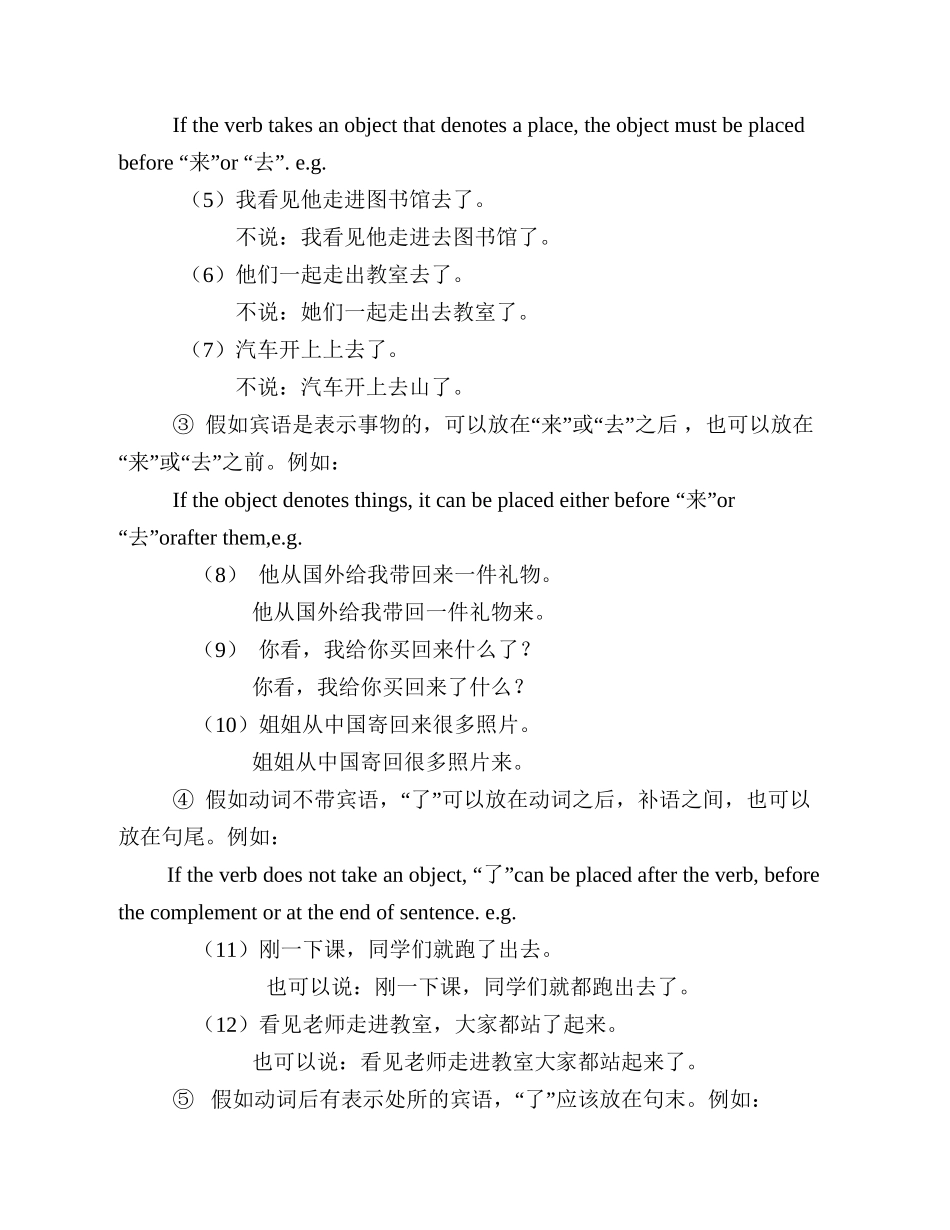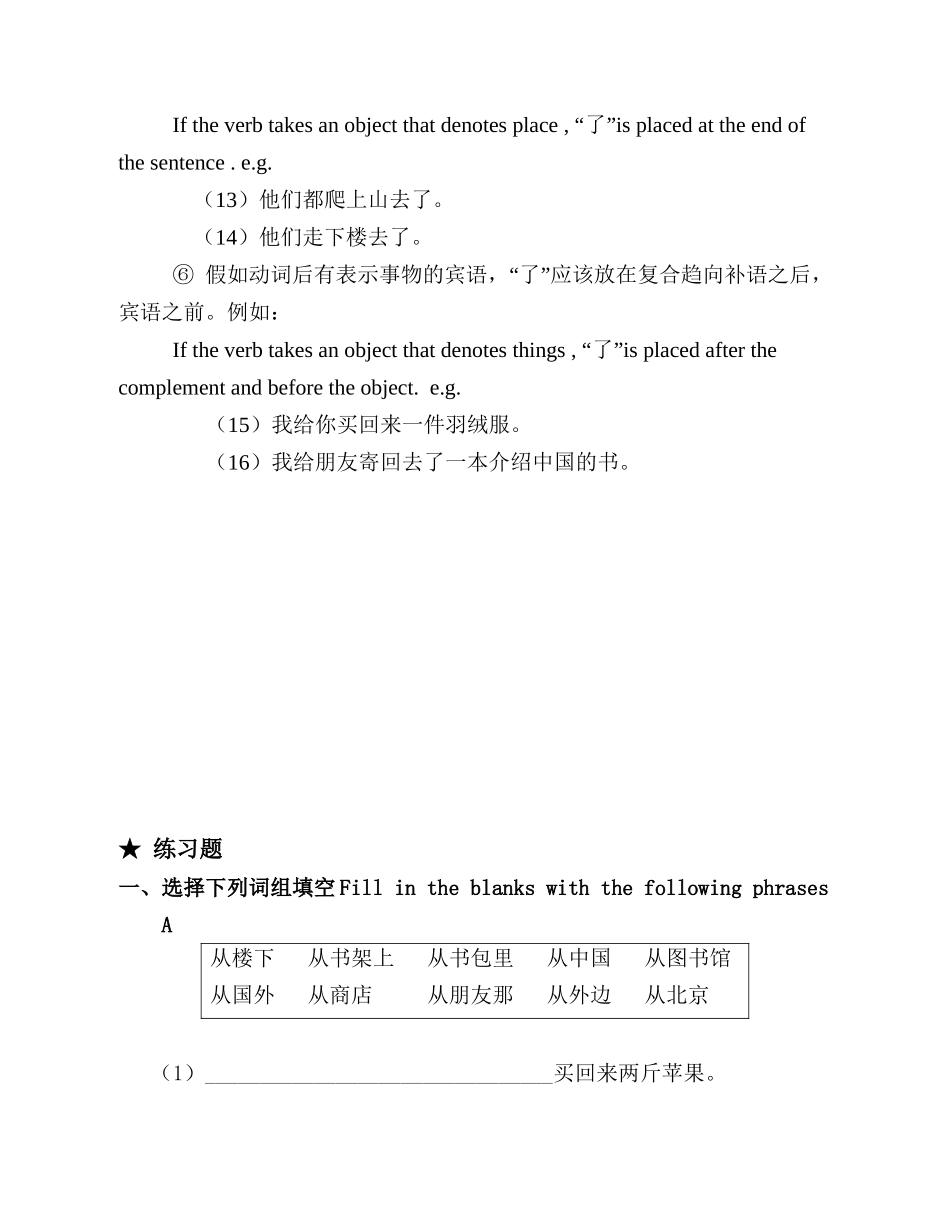第八章 复合趋向补语The compound complement of direction★ 复合趋向补语 The compound complement of direction “”“”“”趋向动词 上、下、进、出、回、过、起 加上 来 或 去 ,放在另一个动词后面作补语,叫复合趋向补语,表示动作的趋向。常用的复合趋向补语。 When a verb denoting directions such as “上、下、进、出、回、过、”起 is followed by “来”or “去”and placed after another verb to function as a complement, it is a compound complement of direction. Such a complement indicates the direction of an act. Some common ones are listed below: ① “来/去”所表示的动作方向与说话人或所指事物之间的关系和简单趋向补语相同。例如: The direction indicated by “来”and“”去 are determined by the relationship between the speaker and the referred thing. The usage is the same as the simple complement of direction. e.g.(1)她走出学校去了。(2)她跑回家来了。(3)我买回来一本书。(4)我们买的书和光盘正好都能放进去。 ② “”“”动词有宾语时,假如宾语是表示处所的,一定要放在 来 或 去 之前。例如:上下进出回过起来上来下来进来出来回来过来起来去上去下去进去出去回去过去 If the verb takes an object that denotes a place, the object must be placed before “来”or “去”. e.g.(5)我看见他走进图书馆去了。 不说:我看见他走进去图书馆了。(6)他们一起走出教室去了。 不说:她们一起走出去教室了。(7)汽车开上上去了。 不说:汽车开上去山了。 ③ “”“” 假如宾语是表示事物的,可以放在 来 或 去 之后 ,也可以放在“”“”来 或 去 之前。例如: If the object denotes things, it can be placed either before “来”or “去”orafter them,e.g.(8 ) 他从国外给我带回来一件礼物。 他从国外给我带回一件礼物来。(9 ) 你看,我给你买回来什么了? 你看,我给你买回来了什么?(10)姐姐从中国寄回来很多照片。 姐姐从中国寄回很多照片来。 ④ “”假如动词不带宾语, 了 可以放在动词之后,补语之间,也可以放在句尾。例如: If the verb does not take an object, “”了 can ...


